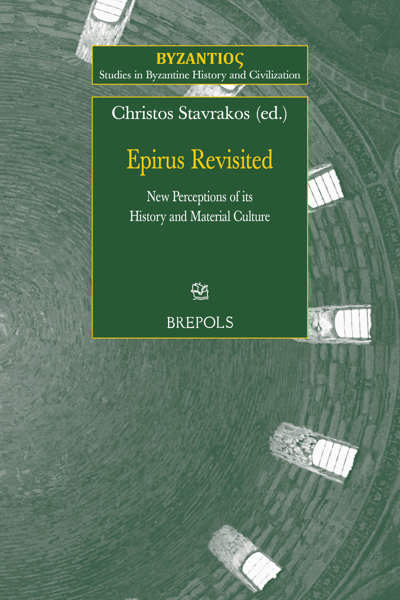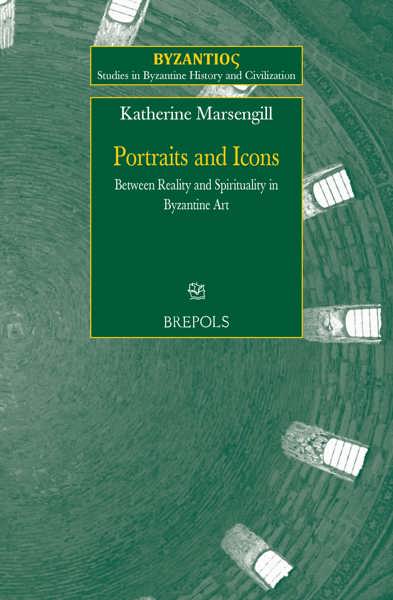
Territories and Boundaries
Crossing rivers in Byzantium and Beyond
Galina Fingarova, Andreas Külzer (eds)
- Pages: approx. 350 p.
- Size:156 x 234 mm
- Illustrations:66 b/w, 100 col.
- Language(s):English, German
- Publication Year:2026
- € 100,00 EXCL. VAT RETAIL PRICE
- ISBN: 978-2-503-61908-8
- Paperback
- Forthcoming (Jan/26)
- € 100,00 EXCL. VAT RETAIL PRICE
- ISBN: 978-2-503-61909-5
- E-book
- Forthcoming
*How to pre-order?
Based on an interdisciplinary discourse the volume offers for the first time an insight into the importance and peculiarities of crossings in Byzantium, both real and symbolic, and reveals new prospects for investigating the Byzantine world
Galina Fingarova is currently a Guest Professor in Byzantine art and archaeology at the University of Ioannina. She has recently completed her project on 'Byzantine Stone Bridges: Material Evidence and Cultural Meanings' which was awarded four international fellowships and will be featured in a forthcoming monograph. Her research interests include Late Antique and Byzantine architecture and iconography, historical geography of the Balkans and of Asia Minor, gender studies in Byzantium, emotions in Antiquity and Byzantium, and Digital Humanities.
Andreas Külzer is a member of the long-term project Tabula Imperii Byzantini at the Austrian Academy of Sciences in Vienna and the responsible leader for the research domain Anatolia. He is Corresponding Member of the German Archaeological Institute and adjunct professor for Byzantine Studies at the University of Cologne. His research focuses on Historical Geography of Asia Minor and the Balkans, Maritime Networks in the Eastern Mediterranean, Landscape Archaeology and the history of Ephesos in Late Antiquity and the Byzantine Period.
Rivers are essential elements of nature that shape the physical landscape and the way of life of people in their surroundings. They define territories and boundaries, separating and connecting in a real and a figurative sense. The crossing of rivers with man-made devices such as fords, rafts, ferries and bridges of various materials demonstrates the dominion of humankind over nature and provides advantages in many areas of human life: social, economic, military. The physical appearance and the effort to construct crossings have granted them symbolic meaning, ranging from triumphal monuments visualizing the conquest of a river and expansion of state territory to places of transition defining a space between opposed worlds.
In order to investigate for the first time the peculiarities of river crossings in the Byzantine empire, the present volume places them in a broad chronological and geographical context. It includes sixteen papers by established and emerging scholars from various European academic institutions and multiple disciplines, stretching chronologically from Late Antiquity to the 16th century and geographically from Jordan to Great Britain. Based on an interdisciplinary discourse the volume shows different aspects of the Byzantine world that bring us further in our understanding of Byzantium.
Galina Fingarova and Andreas Külzer, Introduction
Section I: Crossing the Sacred River Jordan
Basema Hamarneh, Crossing the River Jordan: Hagiographical Tradition and Archaeological Insights
Martin F. Lešák, Crossing the Jordan: From Santa Maria Maggiore to the Roman Apse Decorations
Section II: Water Passages to Constantinople
Mabi Angar, Spatial Perceptions of the Golden Horn and the Early Byzantine Ferry Service to Sykai and its Cemetery
Evangelos Andreou, Sailing Down the Dnieper as Viewed by the Byzantine Emperor Constantine VII Porphyrogennetos (944/945-959 AD) in Chapter 9 of his Treatise "De Administrando Imperio"
Section III: Rivers, Crossing and Road Networks in Asia Minor
Klaus Belke, Flüsse und Flußübergänge im nordwestlichen Kleinasien
Beate Böhlendorf-Arslan, Late Antique and Byzantine Bridges in the Troad
Andreas Külzer, Fluvial Topography in Late Antique and Medieval Western Asia Minor: River Valleys, Roads and Settlements between Caicus and Maeander
Emine Tok and Ender Özbay, Four Bridges around Eski Çine (Aydın, Turkey) and an Appendage to the Local Road System
Section IV: Case Study: The Province of Bilecik
Nurfeddin Kahraman, Historische Straßen von Ιstanbul nach Eskişehir
Refık Arıkan, Recently Re-discovered Bridges around Leuke in Bithynia
Jason T. Roche, Roads, Bridges and Modelling the Movement of the First Crusade in Anatolia (1097)
Section V: Individual Monuments
James Crow, The Wonderful Works: A History of Bridges on the Thracian Aqueducts
Galina Fingarova, Crossing the Swamp: The Kırkgöz Bridge near Bolvadin
Lâtife Summerer, The γέφυρα ἐκ λίθων of Pompeiopolis and the Stone Bridge of Taşköprü
Section VI: Beyond Byzantium
Maximilian Hartmuth, The Stone Bridge of Skopje: Problems of Dating and Interpretation
David Harrison, English Stone Bridges of the Eleventh and Twelfth Centuries, and Possible Continental Influence on Their Development




